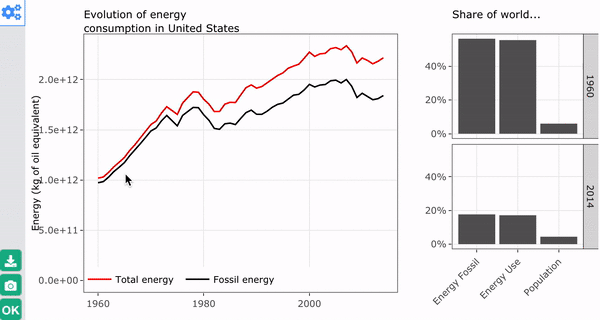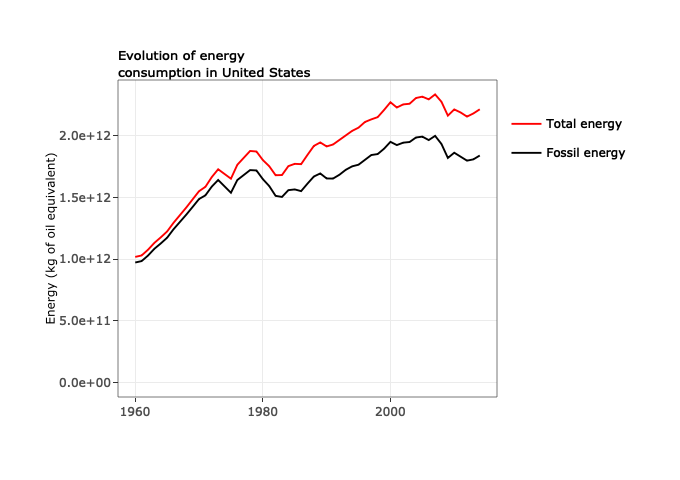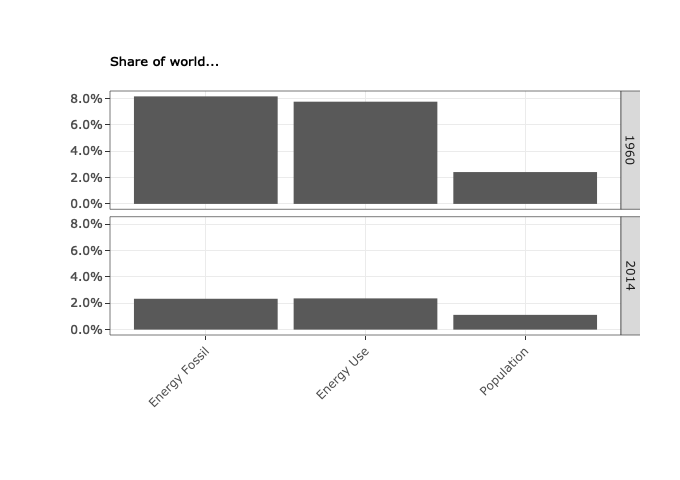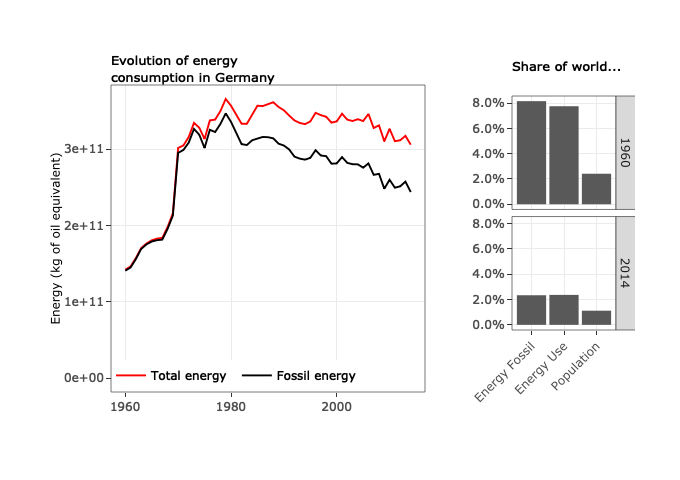manipulateWidget lets you create in just a few lines of R code a nice
user interface to modify the data or the graphical parameters of one or
multiple interactive charts. It is useful to quickly explore visually
some data or for package developers to generate user interfaces easy to
maintain.
This R package is largely inspired by the manipulate package from
Rstudio. It provides the function manipulateWidget that can be used to
create in a very easy way a graphical interface that let the user modify
the data or the parameters of an interactive chart. Technically, the
function generates a Shiny gadget, but the user does not even have to
know what is Shiny.
- Easily combine multiple interactive charts (
htmlwidgets) in a single interactive chart with functioncombineWidgets. - With only a few lines of code, create a complete user interface that lets a user change the settings of a chart: filter the input data, change the model, modify the chart type or anything else.
- Comparison mode: compare at a glance two set of parameters. For instance compare the same chart for two different countries or compare the results of several models or whatever.
- Export to HTML or to PNG with a single click.
All functionalities of this package can be replicated with other packages like shiny, flexdashboard, crosstalk and others. So why another package?
manipulateWidget has three advantages:
- It is easy and fast to use. Only a few lines of
Rare necessary to create a user interface. - Code can be included in any R script. No need to create a dedicated .R or .Rmd file.
- It works with all htmlwidgets. In contrast,
crosstalkonly supports a few of them.
manipulateWidget can be especially powerful for users who are
exploring some data set and want to quickly build a graphical tool to
see what is in their data. manipulateWidget has also some advanced
features that can be used with almost no additional code and that could
seduce some package developers: grouping inputs, conditional inputs and
comparison mode.
The package can be installed from CRAN:
install.packages("manipulateWidget")You can also install the latest development version from github:
devtools::install_github("rte-antares-rpackage/manipulateWidget", ref="develop")The hard part for the user is to write a code that generates an
interactive chart. Once this is done, he only has to describe what
parameter of the code should be modified by what input control. For
instance, consider the following code that identifies clusters in the
iris data set and uses package plotly to generate an interactive
scatter plot.
library(manipulateWidget)
library(dplyr)
library(ggplot2)
library(plotly)
data("worldEnergyUse")
plotEvoUse <- function(Country, Period = c(1960,2014)) {
dataset <- worldEnergyUse %>%
filter(country == Country, year >= Period[1] & year <= Period[2])
ggplot(dataset, aes(year)) +
geom_line(aes(y = energy_used, color = "Total energy")) +
geom_line(aes(y = energy_fossil, color = "Fossil energy")) +
scale_color_manual(values = c("black", "red")) +
expand_limits(y = 0) +
ggtitle(paste("Evolution of energy\nconsumption in", Country)) +
xlab("") + ylab("Energy (kg of oil equivalent)") + labs(color = "") +
theme_bw() +
theme(plot.title = element_text(size=10)) +
theme(axis.title.y = element_text(size=9))
}
plotEvoUse("United States") %>% ggplotly()We create a second function that represents the share of a given country in the world energy consumption and population. We create also create a custom tooltip.
tooltipText <- function(title, value) {
sprintf("%s: %s%%", title, round(value * 100, 1))
}
plotShareUse <- function(Country, Period = c(1960, 2014)) {
dataset <- worldEnergyUse %>%
filter(country == Country, year %in% Period)
ggplot(dataset) +
facet_grid(year ~ .) +
geom_bar(aes("Population", weight = prop_world_population,
text = tooltipText("Population", prop_world_population))) +
geom_bar(aes("Energy Use", weight = prop_world_energy_used,
text = tooltipText("Energy Use", prop_world_energy_used))) +
geom_bar(aes("Energy Fossil", weight = prop_world_energy_fossil,
text = tooltipText("Energy Fossil", prop_world_energy_fossil))) +
ggtitle("Share of world...") +
xlab("") + ylab("") +
scale_y_continuous(labels = scales::percent) +
theme_bw() +
theme(plot.title = element_text(size=10)) +
theme(axis.text.x = element_text(angle = 45, hjust = 1))
}
suppressWarnings(plotShareUse("Germany")) %>%
ggplotly(tooltip = "text")We can combine two charts with the helper function combineWidgets().
We create a new function for clarity, but this is not a requirement.
combinedPlots <- function(Country, Period = c(1960, 2014)) {
combineWidgets(
plotEvoUse(Country, Period) %>% ggplotly() %>%
layout(
legend = list(orientation = "h", x = 0, y = 0, yanchor = "bottom")
),
plotShareUse(Country, Period) %>% ggplotly(tooltip = "text"),
ncol = 2, colsize = c(2, 1)
)
}
combinedPlots("Germany")So we now have some R code that generates a nice interactive chart. Now we would like to create a user interface that lets a user choose the country and the period that he wants to visualize.
Here comes the magic of package manipulateWidget! With this package,
you only have to write a few more lines of R code to achieve this
result:
manipulateWidget(
combinedPlots(Period, Country),
Period = mwSlider(1960, 2014, c(1960, 2014)),
Country = mwSelect(sort(unique(worldEnergyUse$country)), "United States")
)And voila!
For more information take a look at the package vignette.
Copyright 2015-2020 RTE (France)
This Source Code is subject to the terms of the GNU General Public License, version 2 or any higher version. If a copy of the GPL-v2 was not distributed with this file, You can obtain one at https://www.gnu.org/licenses/old-licenses/gpl-2.0.en.html.



